If the leaves of your outdoor cordylines are turning brown, you might want to know how you can bring back their original vibrant color. We did the research to find out what you should do if your cordyline's leaves turn brown.
The leaves of your outdoor cordyline can turn brown due to overwatering. This can result in leaves with dry, brown edges. Other reasons for brown leaves include:
- Underwatering
- Dry air
- Contaminated soil
- Chlorine damage
Brown leaves are something that you should immediately address if you want to keep your cordyline alive and healthy. The key is to identify the reason (or multiple reasons) why the leaves are turning brown. In this post, we have the solutions! Read on to learn how you can revitalize your outdoor cordyline.
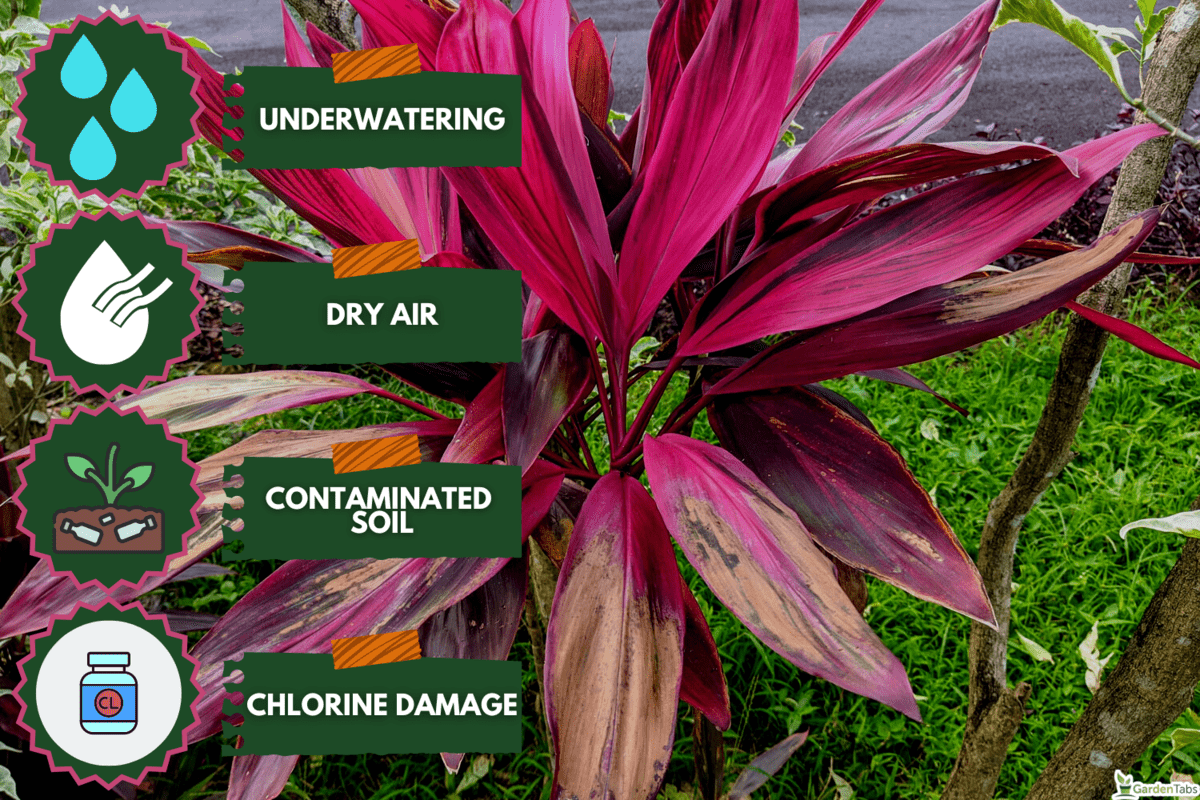
Why Your Outdoor Cordyline Is Turning Brown
Brown leaves are not uncommon for a cordyline plant (also commonly referred to as the ti plant). It's also common among dracaenas, spider plants, prayer plants, and calatheas.
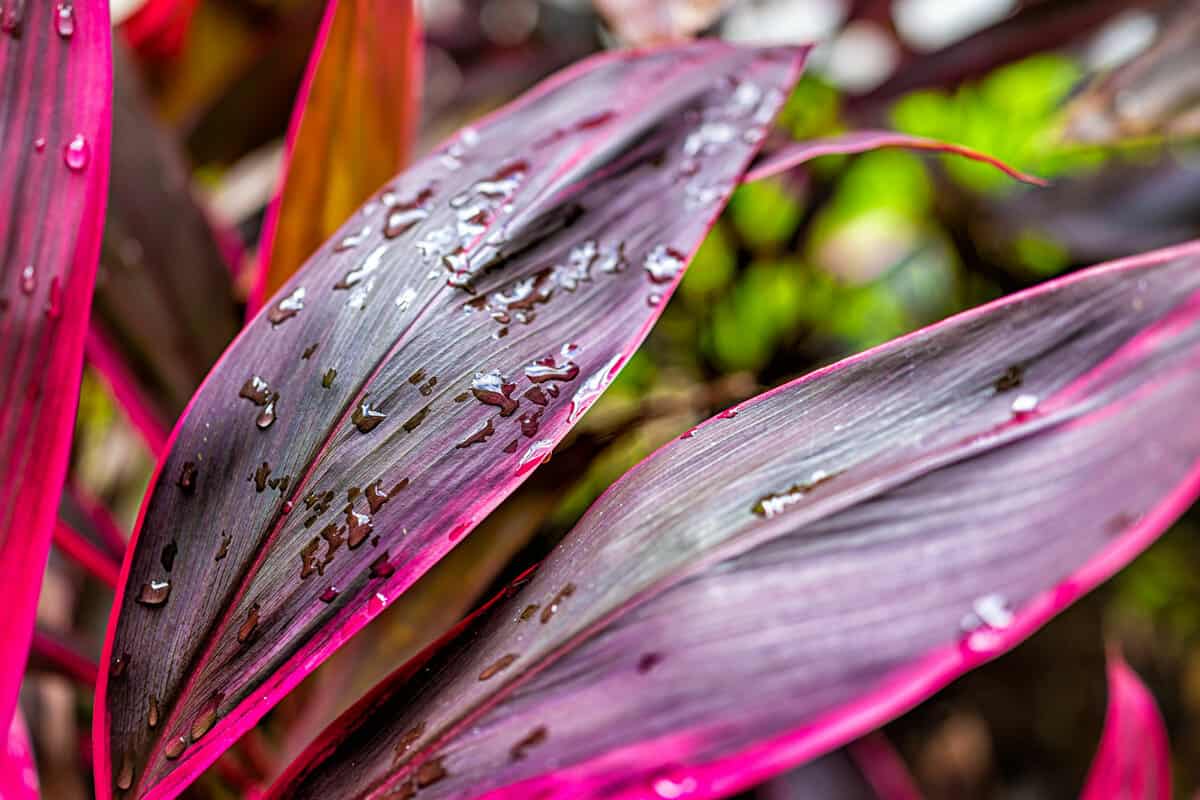
Still, this can be an alarming issue regarding your plant's overall health. Unfortunately, once the leaves have turned brown, there's nothing you can do to bring them back to their original form and color.
To revive the plant, you should cut off the leaves and follow the tips mentioned in this post.
Here are the common reasons why a cordyline plant develops brown leaves.
1. Overwatering
Overwatering is a common issue with most plants, not just the cordyline. As for the cordyline, overwatering can be a big problem because of the risk of fungal infections.
Overwatering is common with cordyline plants in containers. If you sprinkle water on the leaves and the day is not very windy or sunny, you risk causing a fungal infection in the plant.
You should add water directly to the pot. Do not put it on the leaves. Also, you should give your plants a bit more water on sunny days.
Frequent watering can cause leaves to become discolored, turn yellow or brown, and drop off the plant.
Solution To Overwatering
This problem can be fixed. If you feel that the soil has too much moisture, you need to stop watering the plant. Yes, you read that right. Let the soil dry out before you water (the right way) again.
The key is to know when your plant needs watering. If you dip your finger at least one inch deep into the soil, and it feels moist, there's no need to water your plant.
If the soil has a strange stench, the roots are probably beginning to rot. When this happens, your plant is in danger. You should take it out of the pot, remove the rotten roots, and repot the plant. Then practice giving it the right amount of water.
2. Underwatering

Underwatering can be just as much of a problem as overwatering. Remember, water intake is one of the most crucial things in keeping your cordyline's leaves colorful.
If you have a young cordyline, it needs to be watered regularly before it matures.
Other than that, a cordyline plant needs to be watered regularly in the summer and if it's planted in a pot.
Not giving your cordyline enough water can result in brown leaves. As with overwatering, you should feel the texture of the soil. If it feels dry deep into the soil, you're underwatering the plant.
Cordylines planted in the ground are different. They do not require as much watering as potted plants.
Solution To Underwatering
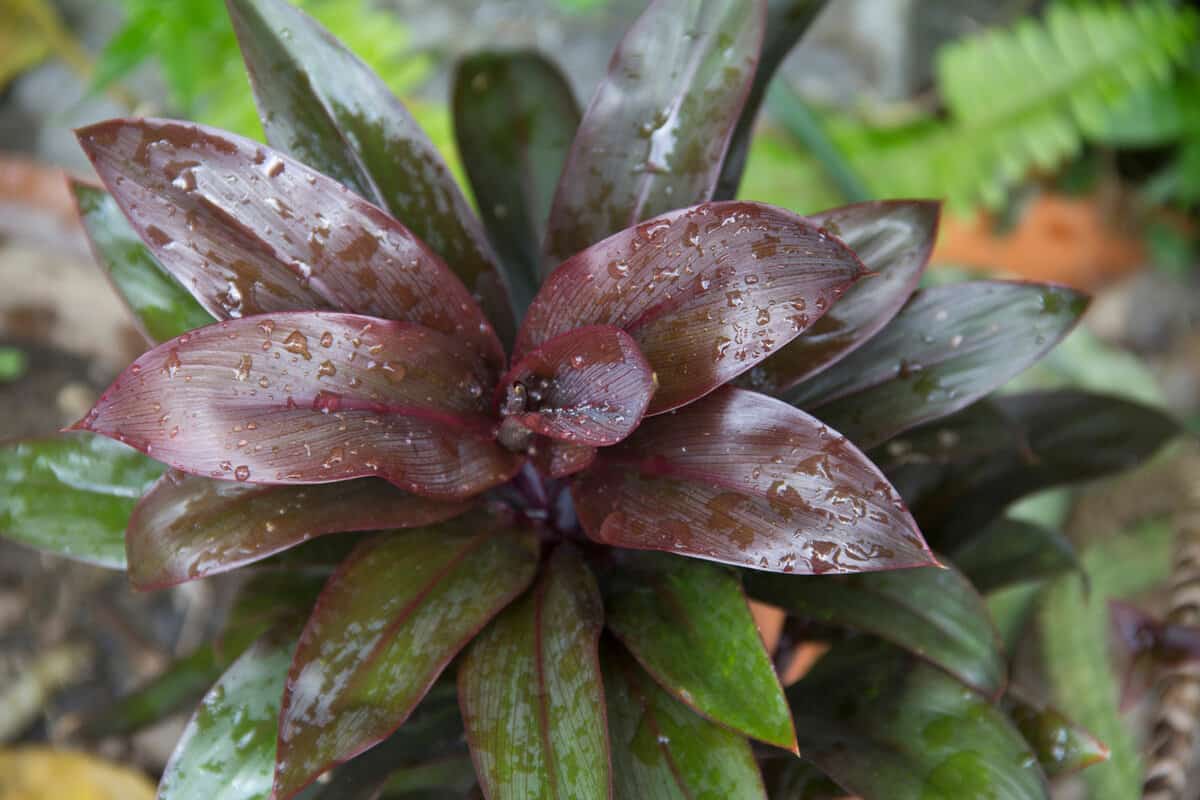
Ideally, the soil's surface should be dry, but it should be moist below the surface. This is how you'll keep your cordyline leaves colorful.
To bring back the colorful leaves, water the plant deeply for a couple of days and monitor its growth. After watering the plant, let the surface dry, but do not let the soil underneath lose moisture.
For cordyline plants planted in pots, water the plant deeply so that the water penetrates the entire root ball. Repeat this process when the soil starts to feel dry.
Water your plant with at least an inch of water, and it should be good for at least a week. If the soil becomes too dry a few days prior to watering, repotting is the next thing you should do.
3. Dry Air
The cordyline plant is native to the tropics, so it's important that you replicate the environment in which it thrives.
Low humidity can happen if you live in a cold area. Even well-established cordylines—ones that have been growing for more than 15 years—can be harmed by frost. This can kill the whole plant.
Cordylines prefer warmer areas and thrive in temperatures about 60 degrees Fahrenheit.
You can improve the quality of air or humidity surrounding your plant so it will thrive.
Solution To Dry Air
You can mist your cordyline if you feel that the leaves are becoming too dry or place it on a pebble tray.
You can place a humidifier near the plant to improve humidity levels.
Check out this humidifier on Amazon.
4. Contaminated Soil And Fluoride Toxicity
Soil can become contaminated when it's exposed to excessive amounts of mineral salts and fertilizer. This can happen when you use tap water on your cordyline plants or use too much fertilizer.
This also happens if your pot is not draining well. The mineral salts and fluoride will build up over time. The cordyline plant is sensitive to these things.
When soil is contaminated, it can be poisonous to your plants. This can cause the roots to die and the leaves to turn brown.
Solution To Contaminated Soil
The solution to this comes in three ways. You should leach the soil of cordylines planted in pots two to three times a year or leave them out in the rain during summer to naturally leach.
You can repot your plant in a bigger pot. Doing this will allow it to breathe and help avoid the risk of accumulating mineral salt and fluoride. Also, do not fertilize your plant too much. Overfertilization can kill a plant.
Knowing your plant's needs is the key. Ideally, you should apply a small amount of fertilizer based on indications and only during the growing season.
If you're using a liquid fertilizer, dilute it to half of the recommended amount, and don't apply it to the leaves.
Read the post "Why Is My Cordyline Dying? [And How To Revive It]" to learn more about reviving your dying cordyline.
5. Chlorine Damage
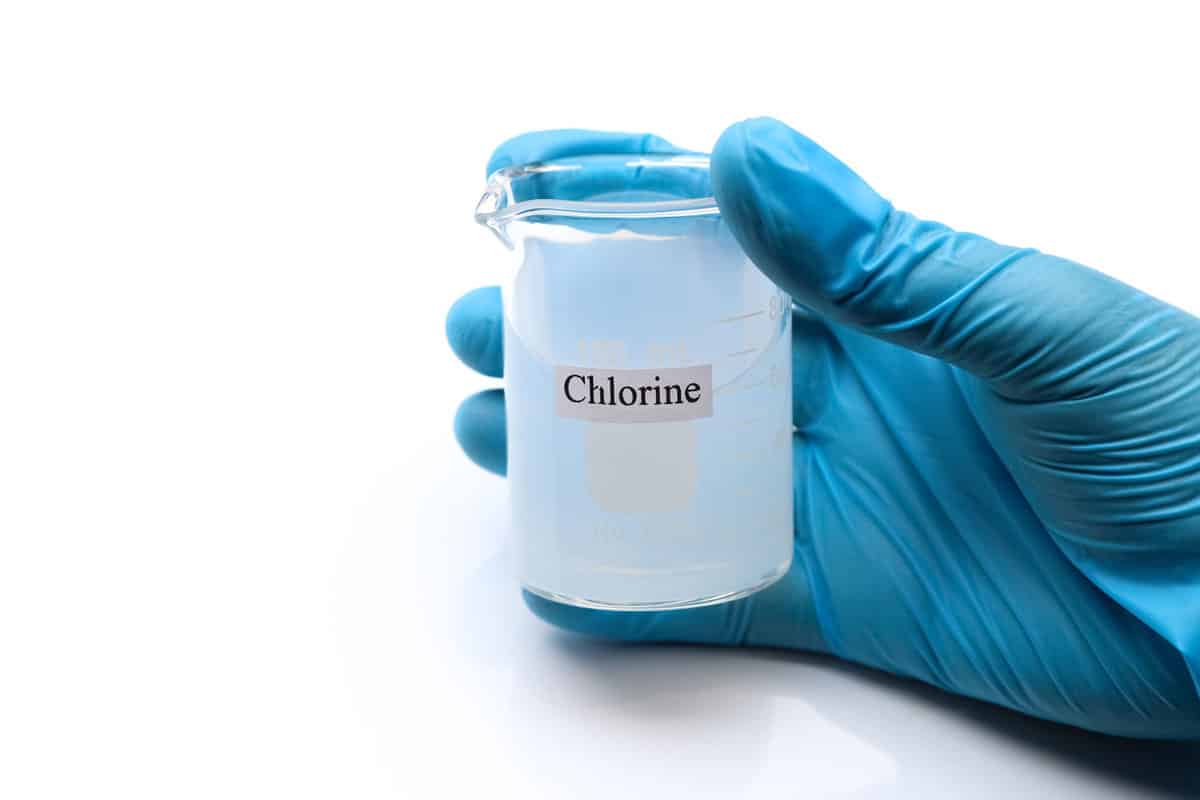
You should be careful about your cordyline's water intake and the content of the water. The kind of water you use plays a role in your plant's growth. Using regular tap water or water with chlorine can have a negative impact on the cordyline.
This is also a risk for cordylines planted in the ground. Like mineral salts, chlorine can collect and build up in the soil. This can also cause brown leaves.
Solution To Chlorine Damage
Avoid using water containing chlorine. Instead, use rainwater, distilled water, or spring water.
An easy, affordable way to remove chlorine from water is to boil the water for about 20 minutes. You should let the water cool before pouring it on the soil of your cordyline.
You can also put water in an uncovered container for one to two days and let the chlorine evaporate.
If you want to learn more about choosing the right water for your plants, read the post "What Is The Best Store Bought Water For Plants?"
Common Issues Regarding Cordylines
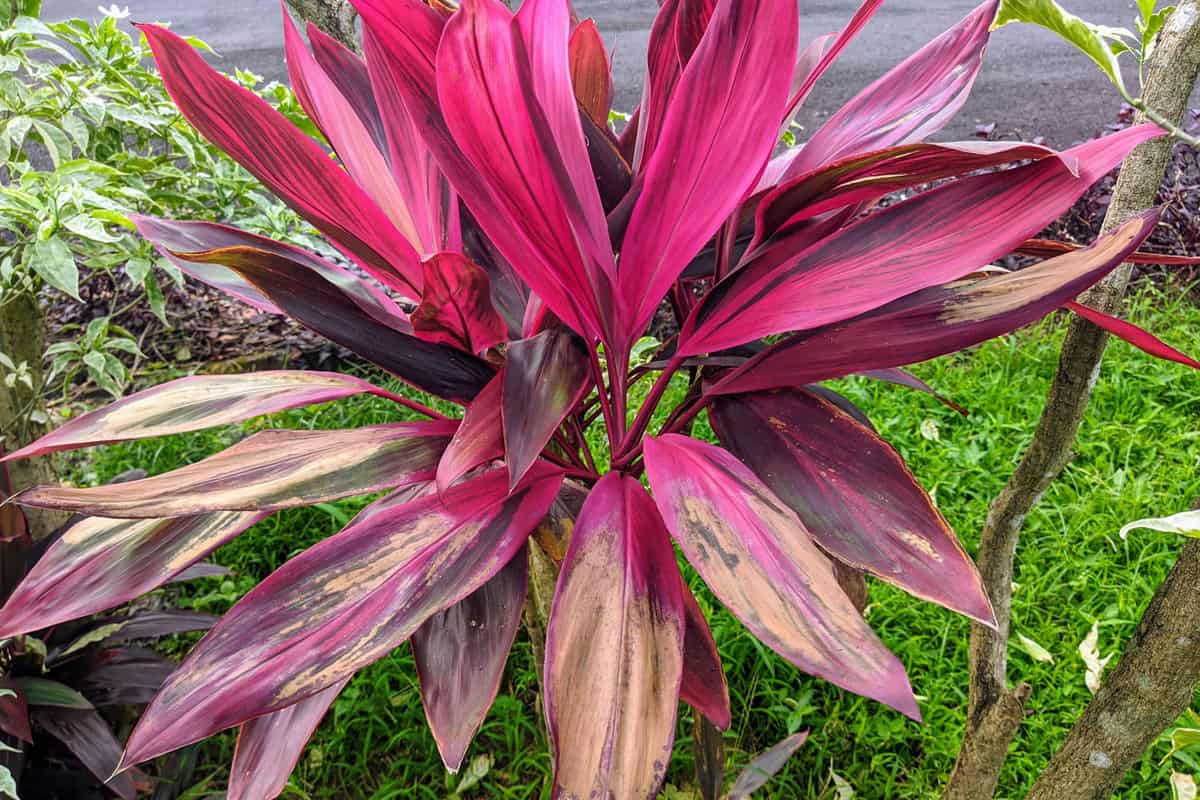
Brown leaves are the only concern regarding the cordyline plant. It can have multiple issues. Don't worry because there's an easy fix to most of these problems. Read on to learn about them.
Dark Or Black Spots
The presence of dark or black spots on your cordyline's leaves is probably due to fungus growth. There's no way to cure the leaves, but you can prevent this from happening.
- Keep the soil moist and add the right amount of water
- Give your cordyline plant the right amount of sunlight
- Get rid of debris and weeds surrounding your plant
Root Rot
Root rot is often caused by a type of fungus called Fusarium. This fungus grows in cold, wet soil. By avoiding overwatering, you'll be able to prevent your plant's roots from going bad. You can address root rot by:
- Removing the plant from its pot or from the ground and getting rid of the infected roots
- Repotting the plant in well-draining soil
- Using a fungicide around the soil
Check out this fungicide on Amazon.
In Conclusion
There are many factors involved when it comes to taking care of outdoor cordylines. It's important that you keep track of the plant's environment. If your cordyline has brown leaves, remove them immediately and follow the tips provided in this post.
As much as possible, try to recreate the plant's native tropical environment. Take note of the temperature, water intake, humidity, and soil condition.
If you follow these tips, you won't have to worry about brown leaves or disease infecting your cordylines.


